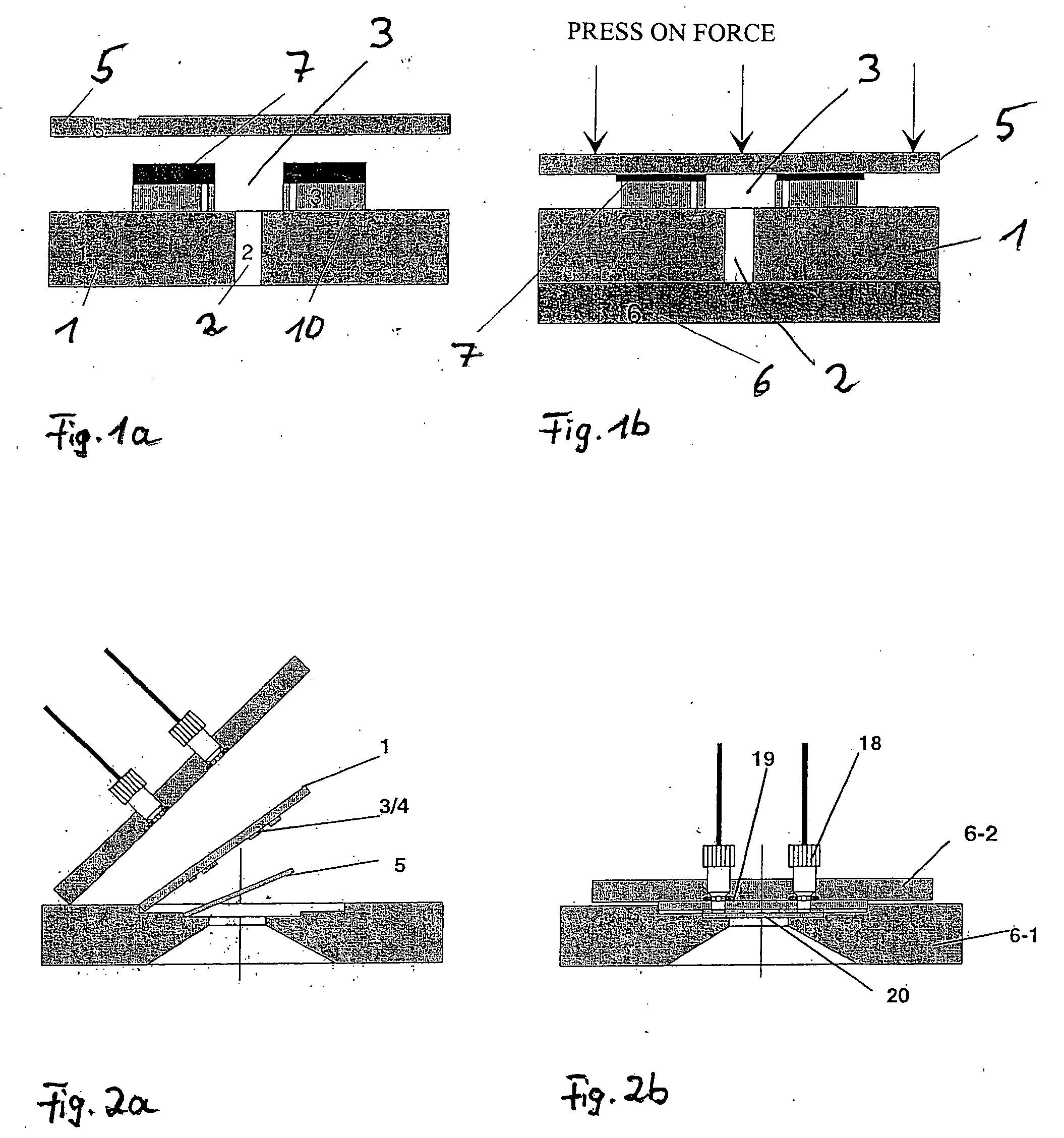Method for producing a 3-D microscope flow-through cell
a flow-through cell and micro-scope technology, applied in the direction of labeling machines, material analysis, mechanical control devices, etc., can solve the problems of inability to accurately adjust the micro-sized channel to the structure of one or both cover glasses, limited channel geometry, and inability to fabricate internal channel barriers
- Summary
- Abstract
- Description
- Claims
- Application Information
AI Technical Summary
Benefits of technology
Problems solved by technology
Method used
Image
Examples
example
(D)
Polydimethylsiloxane (PDMS) Channel Plate
[0063] The production of a PDMS channel plate 30 is represented in FIGS. 10 and 11. FIG. 10a shows the shaping process for production of the PDMS channel plate 30 with a shaping tool (silicon-negative structure 31) before filling with PDMS and FIG. 10b the shaping tool after filling with PDMS by a PDMS inlet 32 as well as channel stoppers 33 in a PMMA plate 34. Lastly, a finished PDMS channel plate 10 is represented in FIG. 10c.
[0064] FIG. 11 shows a ready-to-use microscope cell with the PDMS channel plate.
[0065] Channel systems with the PDMS channel plate 30 meet the highest demands for accuracy, since the shaped structures are produced by microfabrication technologies in silicon and shaping of the silicon master on the PDMS silicon rubber takes place almost error-free. In order to obtain good shaping properties, the silicon master can be plasma-chemically provided with a Teflon coating.
[0066] In this case, the channel, the seal to the co...
PUM
| Property | Measurement | Unit |
|---|---|---|
| thick | aaaaa | aaaaa |
| thick | aaaaa | aaaaa |
| diameter | aaaaa | aaaaa |
Abstract
Description
Claims
Application Information
 Login to View More
Login to View More - R&D
- Intellectual Property
- Life Sciences
- Materials
- Tech Scout
- Unparalleled Data Quality
- Higher Quality Content
- 60% Fewer Hallucinations
Browse by: Latest US Patents, China's latest patents, Technical Efficacy Thesaurus, Application Domain, Technology Topic, Popular Technical Reports.
© 2025 PatSnap. All rights reserved.Legal|Privacy policy|Modern Slavery Act Transparency Statement|Sitemap|About US| Contact US: help@patsnap.com



